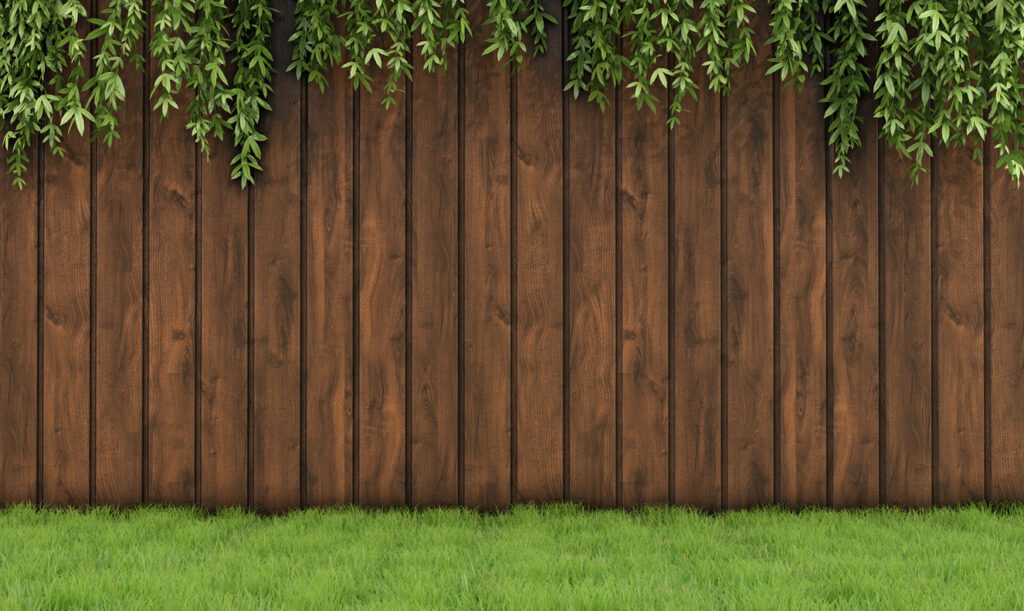Wooden fences are a timeless property enhancement. Of all fence materials, wood is versatile. It can be stained, painted, shaped, or carved to achieve any look you have in mind. And there are many different types of wood that can be used for fences. Two of the most common types are cedar and whitewood. Both have their pros and cons, but which is the best type for wood fence pickets? Consider this comparison to help you decide which type of wood fence will suit your needs.
Whitewood Fences
Whitewood fence panels are made from pine, spruce, or fir trees in most cases. When you buy whitewood fence panels they are listed with the type of tree they came from. You’ll find that whitewood is mostly the same with only subtle differences between the types of trees. There are advantages and disadvantages of whitewood for fencing:
Pros of Whitewood:
- Affordable when compared to other fence materials.
- Easy to work with and install.
- Can be stained, painted, or left natural.
- Comes in a variety of styles and grades.
- Whitewood posts are very durable and hold up better in soil.
Cons of Whitewood:
- Susceptible to rot over time, especially if untreated.
- Can warp and bend from the elements.
- High maintenance; must be retreated or re-stained periodically.
Cedar Wood Fences
Cedar wood comes from cedar trees. Cedar is considered to be a redwood, which shows in the red or rust color of the wood itself. When used for fence panels it has many advantages, but there are also some disadvantages:
Pros of Cedar:
- Attractive color.
- Light grain and fewer knots; looks great without stain or paint.
- Naturally insect resistant.
- Durable; lasts longer than many other wood fence types.
- Holds up in a moist climate.
- Does not require pressure treating.
- Naturally pleasant scent.
Cons of Cedar:
- More expensive than whitewood/pine.
- Can be easily dented and dinged when struck by objects like branches or yard maintenance equipment.
- The red shade of the wood eventually fades to gray.
- Not suitable for fence posts. Posts should be made of pressure treated wood or metal that holds up in the moisture of the ground.
Choosing the Best Material for Your Fence
When deciding between cedar and whitewood for your fence, it helps to weigh the pros and cons and determine what’s most important to you.
Do you need a low maintenance fence? Cedar requires less maintenance over time than whitewood. Annual pressure washing should be all that is needed.
Do you have a limited budget for your fence? Whitewood is less expensive than cedar, so you can keep your budget lower. Installation is easier too, which can decrease labor costs.
What color fence do you want? Whitewood is easier to stain and paint any color. You can match your fence to the trim on your house or the trees you have in your yard.
Want a pest-proof fence? Cedar is naturally insect resistant. It repels termites, ants, flies, ticks and mosquitos. Not only does cedar resist damage from pests, but you can enjoy your yard with less annoyance from bugs.
It can help to see examples of fences made with both materials. Look at photos of both cedar and whitewood fences when they’re new and once they’ve aged so you know what to expect.
Anderson Fence Provides a Variety of Fence Materials
With more than 60 years of experience in fence construction, Anderson Fence can install any type of fence with the material of your choice. We can also assess your property and make a recommendation for the best type of fence. From a variety of wood types to metal fences and even vinyl, we can provide you with a fence that will look great, last for years, and increase your property value.
Contact us today to schedule a free estimate.



